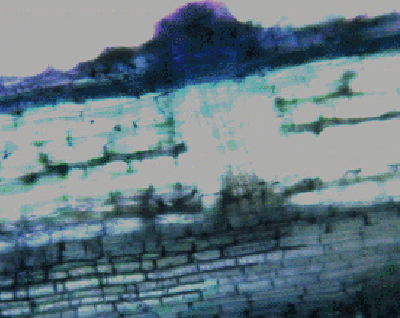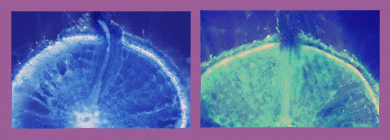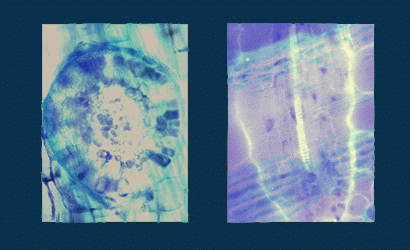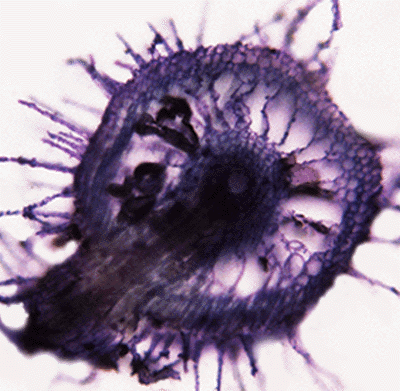


 The
vascular tissue differentiates at the basal part of the lateral root and
develops towards the tip. The vascular tissue develops in the same direction
as the vascular tissue of the parent root. Once the phloem and xylem
of the lateral root begin to differentiate they will become connected with
the same tissues in the parent root. The
vascular tissue differentiates at the basal part of the lateral root and
develops towards the tip. The vascular tissue develops in the same direction
as the vascular tissue of the parent root. Once the phloem and xylem
of the lateral root begin to differentiate they will become connected with
the same tissues in the parent root. |

